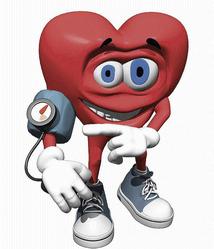
This is an edited version of the complete cardiovascular examination. The original protocol was provided by Dr. Ernest Madu, chairman and chief executive officer, Heart Institute of the Caribbean, Kingston.
General appearance
Colours:
Cyanotic (bluish coloration of the skin, mucous membranes, eyes etc. that results from inadequate oxygenation seen in certain congenital heart diseases, for example, 'hole in the heart'.
Pallid (anaemia).
Jaundiced (anaemia, liver disease).
Hyperpigmented.
Weight loss may be seen in advanced heart failure.
Glaring breathing problems associated with heart failure secondary to abnormal contraction or filling of the heart, severe heart valve disease or high pressures in the pulmonary arteries that supply the lungs.
Syndromes: Specific syndromes from chromosomal abnormalities have specific appearances.
Leg discolouration may be from poor blood supply as seen with peripheral vascular disease.
Blood pressure
Reading of pulse pressure gives insight into possible disease process.
Nails
Look for clubbing, stage 1-5 (seen in cyanotic heart disease, chronic lung disease, advanced liver disease and infective endocarditis (infection of the heart valves).
Hands
For example, look for peripheral cyanosis (that is, bluish discolouration seen in cyanotic heart disease (mainly congenital) and pallor of palmar creases (extreme pale colour of the palmer creases may indicate anaemia 2 degree to blood loss, malabsorption).
Observe wrist for possibility of elevated blood cholesterol levels, for example, type II hyperlipidemia.
Heat (thyrotoxicosis or hyperactive thyroid gland).
Tremor (thyrotoxicosis or hyperactive thyroid gland).
Pulse: rate, rhythm, character, and so on.
Face
Apprehension, pain (angina, heart attack or myocardial infarction, pulmonary embolism etc).
Cushing's (Round face with fat humps or deposits may suggest endocrine condition, high blood pressure or steroid use).
Excessive bone growth secondary toa hormonal abnormality may be related to congestive heart failure and high blood pressure).
Eyes
Examination indicates various heart disease processes.
Mouth
Look at lips, tongue underside, tongue enlargement, breathing to get clues for conditions of the heart.
Neck
Examine for example the carotid: Carotid pulsations, amplitude and upstroke may provide information on cardiac output or heart failure, aortic stenosis or regurgitation
Carotid: auscultate bruit: May be clue to carotid artery stenosis.
Scar of carotid endarterectomy may be obvious.
Jugular venous pressure (JVP) may be elevated when there is right heart failure or fluid overload.
Chest inspection
The consultant cardiologist would for example look for visible pulsations, apex beat, palpation, thrills, heaves, heart sounds, murmurs and listen at lung bases.
Abdomen
Checking for example the liver (which may be enlarged in right heart failure) and renal bruits suggesting blockage of the renal arteries.
Legs
Inspection of the legs may reveal swelling or oedema usually associated with congestive heart failure; brawny discolouration as seen with peripheral vascular disease or diabetic vascular disease.
email: eulalee.thompson@gleanerjm.com
Prevalence of cardiovascular disease risk factors (Jamaica)
| Risk factors | Percentage |
Overweight/obesity: women | 60 |
| men | 30 |
| Hypertension | 20 |
| Pre-hypertension | 30 |
| Diabetes | 8 |
| Interactive/low physical activity | 40 |
Source: Jamaica Lifestyle Survey 2000-2001

